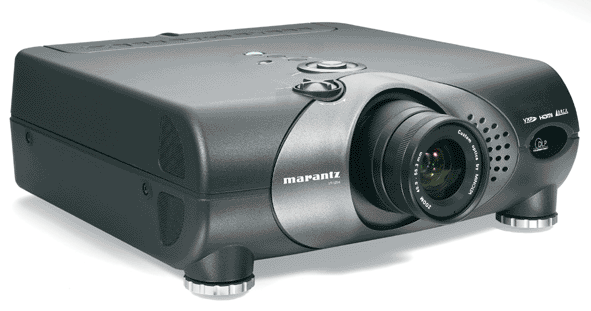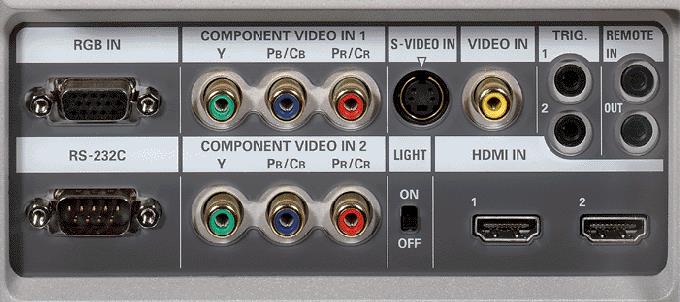Introduction
I would think it would be safe to say that
no other market in the home theater industry is in more of a flux than the
video display market. In the last few years, several new technologies have emerged
making displays bigger, brighter, crisper, and ultimately cheaper. While I
would say that the rear projection market is still the king of reform and
advance, the front projection market has definitely had its fair share of new
and exciting innovations. But how many of these innovations truly add to the
overall experience remains to be seen.
At the end of the day
the whole point of home theater products whether they are speakers, receivers,
processors, or displays is the accurate and faithful reproduction of what the
director or artist intended us to see and hear. This has been true for years
now but it has never really been achievable for the most part. We are getting
a lot closer though, and that ability to come close has gotten a lot cheaper
as technology has advanced. But the widest margin, in my opinion, is still the
consumer playback display. Consumers do have a lot of options now, far more
than ever before, but each takes its toll on the end result with its own
limitations.
For this review I was
lucky enough to have the opportunity to review the Marantz VP12S4. This is
Marantz's flagship single chip 720p DLP projector and rightly so. I've
definitely had the opportunity to use LOTS of projectors over the years and
this one is easily one of the best I've seen to date. Marantz has combined
incredible optics; outstanding construction, state of the art video processing
and the most advanced DLP chip to date in a combined package that leaves
little to be desired. I won't go so far to say that this is the perfect
projector in its class, but it is one of the closest I've seen yet.
Construction
The Marantz VP12S4 uses an almost identical
chassis as the VP12 models before it. The lens is mounted just off center and
the chassis is definitely on the larger side. The unit can be mounted on a
ceiling or used on a table or stand. The chassis is die cast aluminum and
configured to eliminate radiating noise. This is one of my biggest gripes with
DLP based projectors. The majority of the units I've had experience with are
serious noise offenders, especially if you listen to music in your home
theater. This is the second quietest DLP I've not heard to date. The quietest
being the Optoma H79, which is virtually silent. While it is still not as
quiet as some of the LCD projectors I've used, it is a far cry from the
majority of the DLP units I've played around with. Once the initial startup is
finished the unit quiets down considerably making it almost undetectable
during normal viewing, even if the programming is very quiet. My head was
probably only 3-4 ft away from the projector during all viewing.

The S4 offers a
variety of lens options including short, medium, and long throw lenses. All of
the lenses are custom made for Marantz by Konika/Minolta and are some of the
best I've seen to date. The importance of a good lens on a projector is often
overlooked both in reviewing and in purchasing projectors. Lenses contribute
directly to the overall sharpness of the image, and in more ways than one. A
typical issue associated with a poor lens is barrel distortion. Remember that
a lens is not flat but rather curved across the lens plane. Not only that
though, a lens is more than one piece of glass, it is a combination of several
layers. As the image passes through these panes you can get misalignment of
colors as you get farther to the edges of the image. A cheap lens will give
you convergence issues, even with a single chip device. In fact, I've seen
some projectors that have colors several pixels apart in convergence simply
because of the lens. With this unit chromatic aberration was not an issue. The
center of the image was perfect with not even a trace of misalignment of
colors. Marantz makes this extremely easy to test too by including a grid test
pattern that is one click away with the remote. This consists of a black
background with a white grid laid over it. Remember that displays have to
overlay red, green and blue to get white, so if there is a misalignment you
will spot it almost immediately. The left side of the image had a miniscule
amount of drift with the blue fringing out about a third of a pixel. This was
only noticeable from about 3 feet from the screen or closer. The right side of
the image had a bit more with nearly a full pixel of red and a tinge of blue.
Again this was only noticeable from about 5 feet or closer to the screen and
on the right side it was only on the extreme edge of the image.
The
top panel of the projector has a few buttons allowing the user to navigate the
setup menus and power on/off the projector. I never used these features since
I had the projector ceiling mounted. You'll also find the dial for the
vertical lens shift. The S4 offers up to 200 percent of range with its
vertical lens shift but unfortunately it does not offer horizontal lens shift.
This is a feature that seems to be rare for DLP based projectors for some
reason. It has become very common with LCD based projectors and makes setup
far easier in the long run. I was also surprised that the S4 did not feature
powered lens shift or focus. Given its rather premium price tag, this is a
feature that I would almost expect. There are several DLP based projectors
that offer this feature making setup even easier (especially focus!). While I
don't find this a deal breaker by any means I do think that this price point
dictates these kinds of features.
The back panel boasts
an impressive array of inputs and setup flexibility. The most impressive
attribute had to be the dual HDMI inputs. I know of no other projector
currently offering this, but I would LOVE to see it become the norm. While a
lot of people out there would not get much use out of it, it would be an
invaluable tool for a reviewer like myself. This would allow me the
opportunity to have a dedicated input for review equipment and another for my
personal equipment. That saves a lot of re-arranging when I get new stuff in
and have to make room for it simply because there aren't inputs to share. It
also makes comparing sources a lot easier.
The
back panel also sports dual component video inputs, a single S-Video input,
and a single composite video input. You'll also find a standard RGB input for
use with a computer. For flexibility in operation Marantz has also included
two trigger outputs for things like powered screens and a remote input and
output for use with other Marantz products. Last but not least is a RS-232
port. This can be used for firmware changes and is also used with the supplied
lens cap that features a color meter for automatic grayscale calibration. I'll
go over this feature later.

Marantz has included
a small light on the back panel that can be switched on or off. While I
consider this a small feature overall, it shows the care that went into the
design. Little things like this make a big difference when you are trying to
hook something up in a dark room or verifying connections. My room is
extremely dark, and even with the lights on it is REALLY hard to see the back
of the projector, so I appreciated the light.
Overall I would say
that the S4 has one of the best builds I've seen from a DLP projector. It is
extremely solid and has ample support for input needs. If the S4 supported
horizontal lens shift and power functions, it would have been the best I've
seen to date in this department.
Click Here to Go to Part II.